


















































WES ABNEY CEO & FOUNDER
wes@leafmagazines.com
MIKE RICKER OPERATING PARTNER ricker@leafmagazines.com
TOM BOWERS CHIEF OPERATING OFFICER tom@leafmagazines.com
DANIEL BERMAN CHIEF CREATIVE OFFICER daniel@leafmagazines.com
AMANDA LOPEZ STATE CONTENT DIRECTOR amanda@leafmagazines.com
MAKANI NELSON STATE SALES DIRECTOR makani@leafmagazines.com (808) 754-4182
BOBBY BLACK LEAF BOWL DIRECTOR & HISTORIAN bobbyblack@leafmagazines.com
KAYL WOHL COPY EDITOR kayl@leafmagazines.com
This annual edition is always a huge undertaking as we try our best to always bring you new artists, legends and some of the most stunning pictures we can. Gracing our cover this year is the multidimensional master of colorways, Kevin Murray @kevinmurrayglass. He’s always bringing the heat, but not to go unmentioned, this image and many others you’ll enjoy this month come from the talented Eugene photographer Wind Home. Thanks for joining us this month. Sit back, take a toke and enjoy the amazing artists and photos while you flip through the pages of this year’s Glass Issue! -REX, @BOROPHOTO
COVER PHOTO BY WIND HOME @WINDHOME
DESIGN BY DANIEL BERMAN @BERMANPHOTOS
WES ABNEY, FEATURES
DANIEL BERMAN, DESIGN
BOBBY BLACK, DESIGN + FEATURES
JOSHUA BOULET, ILLUSTRATION
TOM BOWERS, FEATURES
JEFF DIMARCO, PHOTOS
REX HILSINGER, FEATURES + PHOTOS
WIND HOME, PHOTOS
MICHAEL GREENMAN, VIDEO
MATT JACKSON, FEATURES + ART
GREG MALCOLM, PHOTOS
JOSHUA MONTHEI, PHOTOS
JAMIE OWENS, FEATURES
ALEX REYNA, PHOTOS
SARAH SANDOVAL, SALES
TERPODACTYL MEDIA, FEATURES + PHOTOS
BRUCE & LAURIE WOLF, RECIPES
WOODY’S GLASS GALLERY, PHOTOS
JAMIE ZILL, PHOTOS
We are creators of targeted, independent Cannabis journalism. Please email us to discuss advertising in an upcoming issue of Oregon Leaf. We do not sell stories or coverage. Email makani@leafmagazines.com to learn more about our range of affordable print and digital advertising options to help support Oregon Leaf, the state’s longest-running Cannabis magazine!
Our 4/20 tradition of an April glass issue dates back to 2011 when I first fell in love with the amazing art that serves functionally to get us high. Back then glass was still illegal paraphernalia, and going to a head shop meant talking about water tobacco pipes with a wink and a nod.
We began documenting glass as an underground movement, which rapidly became a heady art scene and then the dominant status symbol for an industry emerging from the shadows of illegality. As the plant has evolved from a medical fringe movement to a mainstream industry, the value and appreciation for the act of getting high have evolved into the finest high art.
Like many social and cultural movements, art is a driver for the Cannabis community, especially in the form of glass. The combination of beauty and function is stunning and only matched in the performance world of cars and boats. But as sexy as a dripping red Ferrari is, it can only get you high on dopamine, not THC. When I see a fresh drop from Mothership Glass, I imagine the process of heating a dab and inhaling a monster hit through a custom bong that has as much precision, intention and ripping effect as a sports car.
There’s glass that blows the mind with intense collaborations, like the Molten Art Classic “The Shipwreck” piece, a visual journey to the bottom of a dabby sea (Northeast Leaf, April 2024 cover), or pieces from artists like Mia Shea that celebrate the beauty and femininity of the female body in a sensual form (Northwest Leaf, April 2022 cover). From the simplest spoon pipe to the most intricate dab rigs, all glass has a special feel, as we return to it to feel good in a daily or even hourly ritual.
The ritual of getting high, the process by which we enjoy our medicine and recreation, has power and meaning when done with intention. Keeping a clean glass station helps deliver clean meds to the body, mind and soul, and adds to the natural experience of our plant. Cannabis and art go hand in hand, and celebrating artists from around the country in our 15th annual 4/20 Glass Issue brings me great joy!



“...ART IS A DRIVER FOR THE CANNABIS COMMUNITY, ESPECIALLY IN THE FORM OF GLASS.”


In honor of all the artists who have brought beauty to this ind ustry, please keep your bong clean, support locally sourced glass and support an artist by buying a new piece to celebrate the plant for 4/20!



$50m
Glass House, a vertically integrated Cannabis company in California, has secured a new $50 million loan. It is one of the fastest-growing Cannabis companies in the U.S., and it plans to pay off its previous loan while pushing a majority of its current debt to 2030. This can be seen as an investment in an everexpanding market as well as a prediction for the future of Cannabis in the United States. Lenders don’t loan that many millions without strong confidence in this industry’s future.

Photo courtesy GlassHouseFarms.com



$100k
Nearly 10 years ago in 2016, this pipe sold for more than $100,000 at auction — a momentous day in the world of high-end glass art. Mothership Glass’ Scott Deppe and solo artist Sagan Glass made this unbelievable Fabergé moon-phase egg. As a functional pipe, this piece pushes the limits of how far bongs can go. With several crescent and full moons adorning it, there is always another facet of this work of art to catch your eye. The gigantic moon marble near the bottom of the piece was legitimately launched into space before the construction of this pipe. Photo courtesy MothershipGlass.com
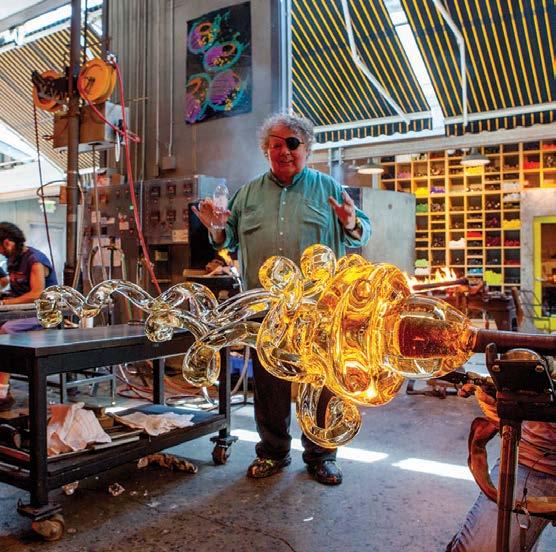
$120k
$420k
More than just an ironic number, a dispensary owner in Massachusetts reportedly owes the state around $424,000 in unpaid sales tax. Last month, the Massachusetts Department of Revenue received permission to seize assets and property in hopes of covering the debt allegedly owed by the operators behind Rebelle. The state secured a bank levy on the business’s accounts but did not succeed in actually taking money from their accounts. Photo courtesy instagram.com/rebellerebels



In 2015, a 43-year-old man was arrested for smashing a Dale Chihuly sculpture valued at $120,000. The sculpture was on display at the Tacoma Art Museum in Washington when the man entered a closed exhibit. Video footage showed him swinging his arm before colored glass appeared shattered all over the floor. He tried to enter another closed exhibit before being stopped and apprehended by museum security. Photo of artist courtesy DaleChihuly.com
$72m
In 2024, the Maryland Comptroller’s Office collected more than $72,000,000 in tax revenues on recreational Cannabis sales. Medical patients in Maryland didn’t pay any of that tax, which shows the value of holding a medical Cannabis card even in an adult-use state. There is a 9% sales tax on all recreational Cannabis sales, which can really add up for daily Cannabis consumers. Photo by Adobe Stock

It is widely expected that Virginia Gov. Glenn Youngkin will veto a lawmaker-passed plan to legalize retail sales of Cannabis in the commonwealth. This would lead to the state missing out on tens of millions of dollars in state revenue — funds that could be used for everything from kindergarten programs to substance abuse treatment. One can’t help but wonder what is going through the mind of someone knowingly attempting to block an effort geared toward bettering their state as a whole.

$10m+
1.4m

Photo by Creative Commons
According to a new report commissioned by California’s Department of Cannabis Control, the state increased legal Cannabis production by 11.8% in 2024. Moving up to 1.4 million pounds produced annually, this is a clear sign that California’s Cannabis market is booming. Whether it comes down to Cannabis tourism or locals keeping their stash heavy, this is a healthy trend to see in such a well-developed Cannabis market.
Photo by Adobe Stock

150
During a routine traffic stop in Webster Parish, Louisiana, deputies seized approximately 150 pounds of what was described as high-grade Cannabis. The load was valued at an estimated $225,000, and Georgia resident Joseph Alva Harper was taken into custody on multiple charges, including possession in the presence of a firearm.
Photo courtesy Webster Parish Sheriff's Office






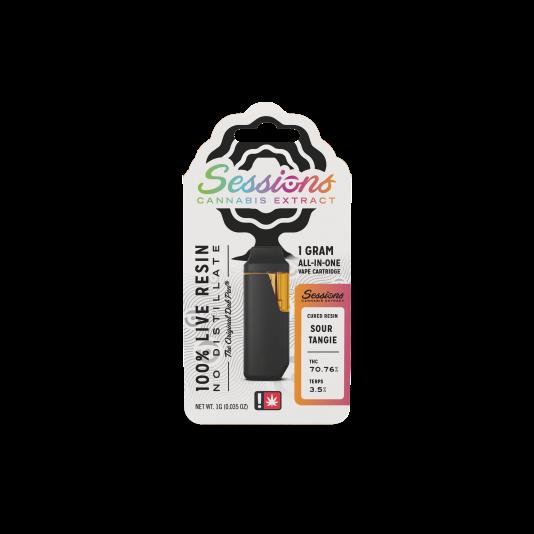





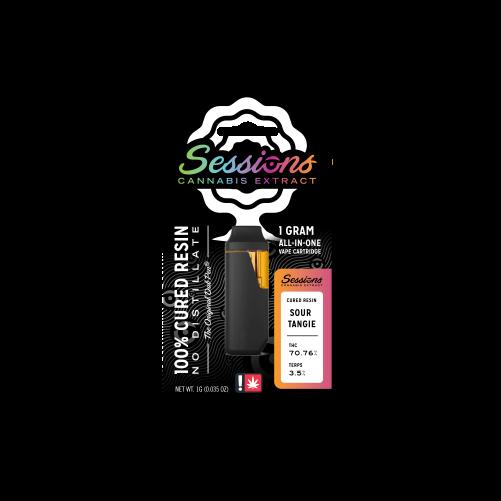








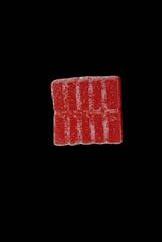








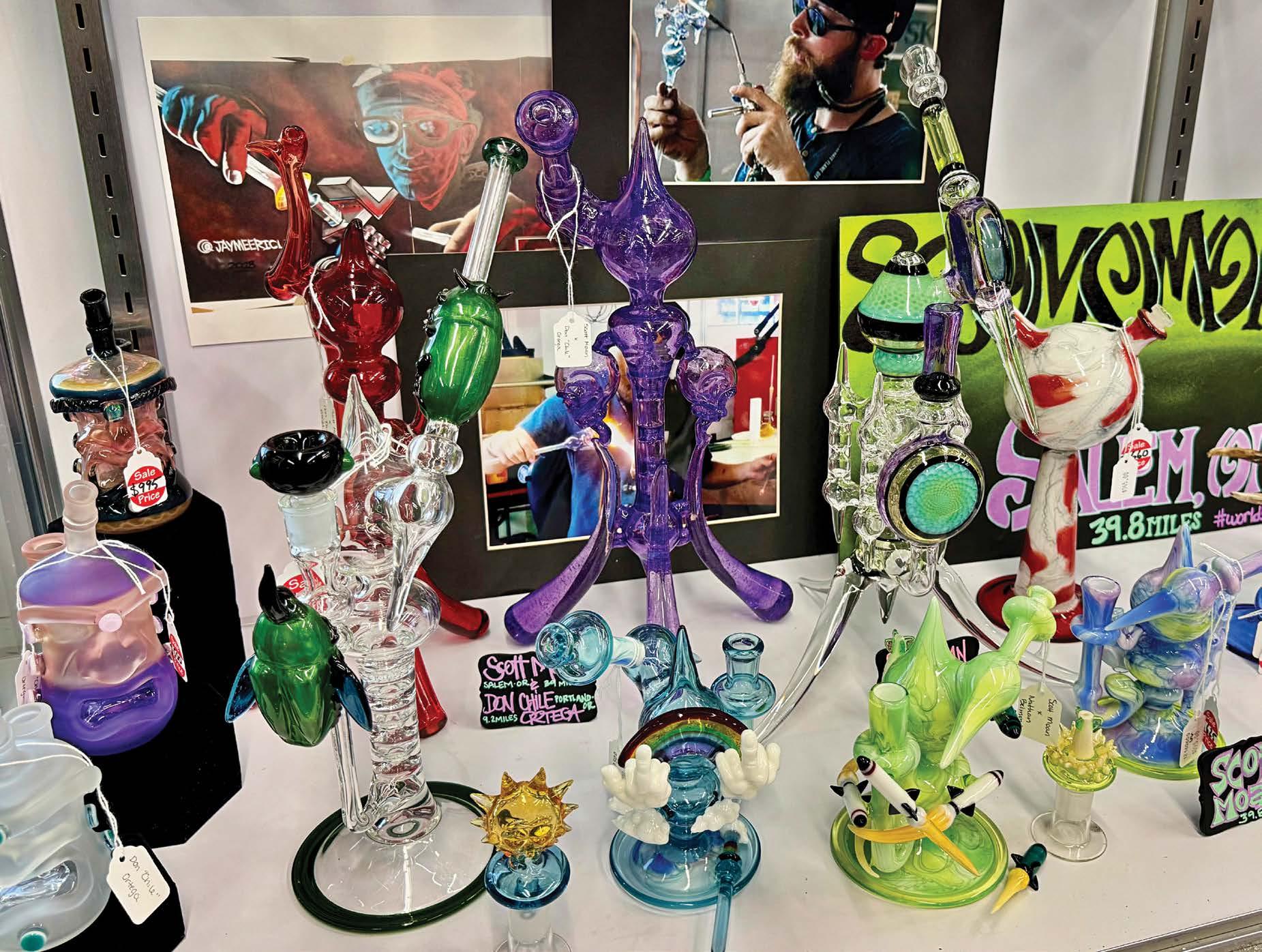


Green Light District (GLD) is a one-stop smoke shop with a sign ificant history steeped in glass culture. Located in Tigard, Oregon, this prodigious store opened on Oct. 10, 2010 (10-10-10), and has been raising the bar on functional glass retail for almost 15 years.

CO-OWNERS Aubré Webb and Eric Weeks are no rookies in the borosilicate game. With over 20 years of experience in the industry, they’ve been around the torch a couple of times and have seen the expansion of heady glass from something of a smaller, niche interest into the irrefutable pillar of Cannabis culture and artistic expression it is today.
GLD carries a wide range of products with a strong emphasis on showcasing American-made items. From old-school spoon-shaped bowls to 2-foot-tall UV dab rigs shaped like aliens (shoutout Laceface Glass), the establishment is a virtual museum of functional smokeware and accessories. Local artists like Scomo Moanet, Northern Waters Glass, Jedi Glass, Don Chile Ortega, and Boro Farm are featured prominently with their own displays. Signs are placed in the cases with a number of miles that indicate how far each glassblower actu-
ally lives from the location. The idea that such awe-inspiring pieces could be created as close as 10 minutes away from the very spot customers are standing sparks a feeling of connectedness with the art and drives home the significance of the local scene here in Oregon.
Of particular interest, GLD possesses one of the largest collections of Boro Derby cars in existence, with more than 20 vehicles carefully arranged on the shelves.
In regards to the Derby, Weeks explains, “Some people make a car that’s just going to get a laugh; some people will make a car they’ll actually try to win with by going down the track faster than anybody else.”
Featuring all the excitement of Hot Wheels and all the smokability of a fully fledged pipe, these borosilicate-based automobiles really put the fun in functional.







WE SELL EVERYTHING FROM VAPORIZERS TO JOINT PAPERS, BUT WE ALSO TRY TO RUN A BUSINESS THAT CATERS TO MORE THAN JUST SMOKING NEEDS,”
Outside of glass, the store also stocks quite the conglomeration of counterculture commodities. “We sell everything from vaporizers to joint papers, but we also try to run a business that caters to more than just smoking needs,” Webb explains. “You could bring your grandmother in here, and she’s going to find at least a few things she’s interested in.”
Patrons can browse handmade tie-dyes designed by Weeks, candles, earrings and even novelties like tarot cards. This isn’t the den of iniquity that non-Cannabis consumers may picture when they hear the phrase head shop, the vibe here is bright, giving off a friendly impression of comfortability with an almost punk-rock twist.
While there have been some ups and downs in the market in recent years, Webb and Weeks maintain a steadfast commitment to the culture and an enthusiastic passion for the art.
“We hope people continue to find a connection to it,” Webb notes.
“I still have the first piece I ever bought over 20 years ago. We love seeing customers appreciate and really focus on the art of it. We’d love to encourage anyone to stop in and experience it for themselves.”
















Z Pie is a cross of Original Z (formerly known as Zkittlez) and Georgia Pie, bred by Raw Genetics. This particular cultivar comes from the folks at Real Eve Farms and was refined by Higher Heads into this juicy jar of rosin.
LIFTING THE LID of this saucy selection releases a zesty, distinctly Z zing to the nostrils. It’s candy-like but with a gassy, chemical undertone that’s balanced so well that you might catch yourself huffing the jar for a solid minute, just trying to pull the layers apart. One second, it’s sweet and syrupy; the next, it’s got that high-octane funk. But the candy eventually claws its way to the top.
Z Pie is an honest advertiser, and if you enjoy the nose, you won’t be let down by the dab — it’s an accurate translation of terpsto-tongue.
Scooping up your serving, you’ll be surprised by the stability behind the saucy surface — it’s that perfect middle ground between wet and workable. Waves of Z waft up as you dig in deeper and drop it in the banger. Sugary smoke warmed with a push of petrol cascades into a creamy complexity that coats the throat and lingers just long enough to leave a lasting impression. 73.10% THC
“Sugary smoke warmed with a push of petrol cascades into a creamy complexity…”
WWW.HIGHERHEADS.CO
@HIGHERHEADS_ @REALEVEFARMS
WWW.RAWGENETICS.IO @RAWGENETICS_OFFICIAL



Terrp Treats took home the second-place trophy for Best Edible at the most recent Oregon Growers Cup, and after one bite (okay, it was more like several), it’s easy to see why. These magnificent morsels deliver a fruity flavor flight, paired with a smooth and satisfying soft chew that makes it too easy to justify “just one more” of the juicy jewels.

THEY COME in four juicy flavors: Mango Pineapple, Blue Raspberry, Watermelon Apple and Tropical Punch, each crafted with a gentle blend of sugar, fruit-derived pectin, citric acid, natural flavor, natural color, coconut oil and Hash Gurus’ hash rosin. From the moment you open the package, the beautiful, fruity nose instigates an instant mouthwatering sensation as juicy notes jump out to please the palate.
The sticky-sweet gummies are dusted with a delicate layer of sugar crystals, offering a tantalizing tang before the candy core melts onto the mainstage. Though faint hints of hash rosin lurk in the shadows, they are quickly bulldozed by frenzies of bold fruit, creating a smooth yet vibrant taste experience.
We couldn’t pick just one favorite flavor, so naturally, we kept circling back to all four, mixing and matching tropical combinations that transported us far away from Oregon’s rainy reality. Coming in bold little blocks of 100 mg that pull apart into ten 10 mg chunks, these are perfect for sharing a piece of paradise with a friend or diving headfirst into a vibrant vacation.
“From the moment you open the package, the beautiful, fruity nose instigates an instant mouthwatering sensation…”
@TERRP.TREATS | @HASH_GURUS






Have you noticed that vegetables have really stepped up their game?
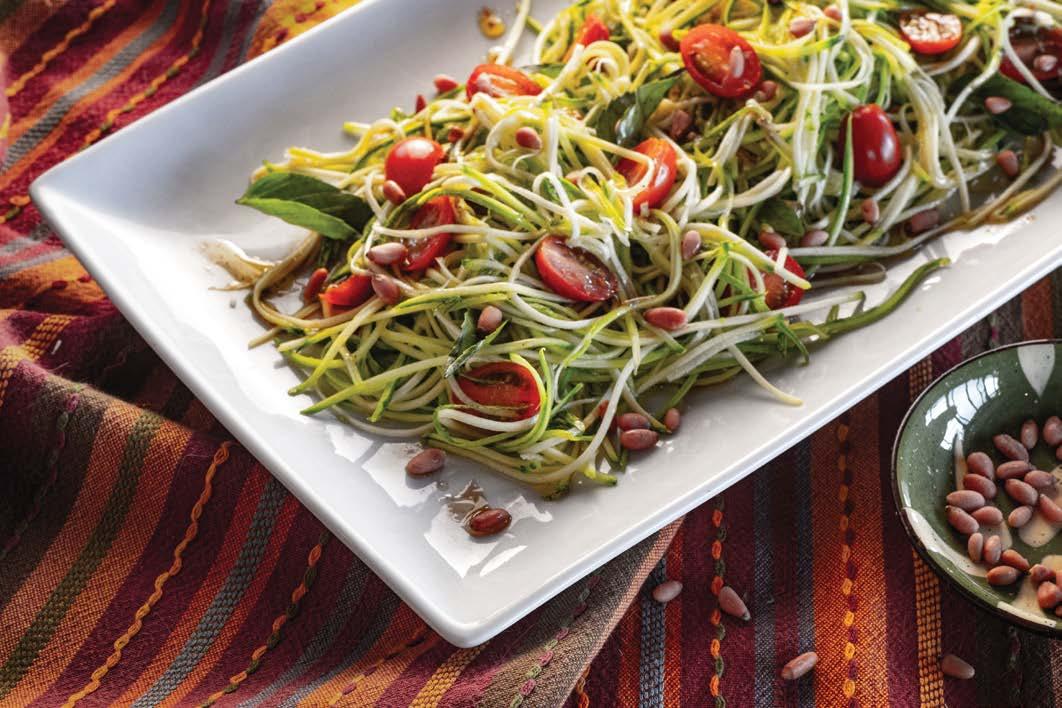


You know what’s nice? Spring. As the weather gets warmer, you can begin to eat seasonally. It’s fun to go and check out what’s coming up, literally, and what you may not see again till next year. Eating seasonally and locally is great if you can do it. Maybe not all the time, but when you can. Once again, I am using the strain Astral Works from Pruf Cultivar. It’s high in CBD and quite tasty. I find it uplifting, not stoney, and I easily get stuff done and feel good doing it. What more could you ask for? Well, you could ask for stoney, but not today. Laurie@Laurieandmaryjane.com


4 medium zucchini, julienned
1 tablespoon salt
1 cup cherry tomatoes, halved 1/4 cup pine nuts
4 tablespoons olive or avocado oil
1 to 2 tablespoons canna-oil
2 tablespoons white balsamic vinegar
2 cloves garlic, minced 1/2 teaspoon crushed red pepper
Salt and pepper
6 coriander or basil leaves
1. Using a spiralizer, mandolin or sharp knife, cut the zucchini into long strips. Place in a colander and toss with the salt. Allow to drain for 10 minutes. Rinse and gently pat dry.
2. In a medium bowl, combine the tomatoes, pine nuts, oils, vinegar, garlic and crushed red pepper. Add salt and pepper to taste.
3. Toss with the zucchini, place on a platter and tuck some leaves into the mixture.
1 (14.5-ounce) can white beans, drained but not rinsed 1/2 cup roasted red peppers
1/3 cup carrots, julienned 1/4 cup jicama, julienned
3 tablespoons onion, finely chopped
2 tablespoons olive oil
2 teaspoons canna-oil
1 tablespoon lemon juice
1 tablespoon red wine vinegar
1 teaspoon herbs de Provence
Salt and pepper
1. Using a spiralizer, mandolin or sharp knife, cut the carrots and jicama into long strips.
In a medium bowl, combine the beans, roasted red peppers, carrots, jicama and finely chopped onion.
2. In a small bowl, whisk the oils, lemon juice, red wine vinegar, herbs de Provence and salt and pepper. Pour the dressing over the vegetables and beans, tossing gently to coat.
1 large cauliflower
4 tablespoons olive oil
2 tablespoons canna-oil
3 tablespoons fresh lemon
1 tablespoon honey
1 clove garlic, minced 1/2 teaspoon cumin
1/3 teaspoon ground coriander 1/4 teaspoon turmeric 1/4 teaspoon coarse salt
1. Heat oven to 340 degrees. Line a baking sheet with foil or parchment. Slice the bottom off the cauliflower so it sits evenly on the baking sheet.
2. In a small bowl, combine the remaining ingredients.
3. Spread the mixture over the cauliflower and bake for 1 hour, drizzling the cauliflower with pan juices a few times during the baking time.
4. Cut into wedges to serve. Drizzle with remaining pan juices.
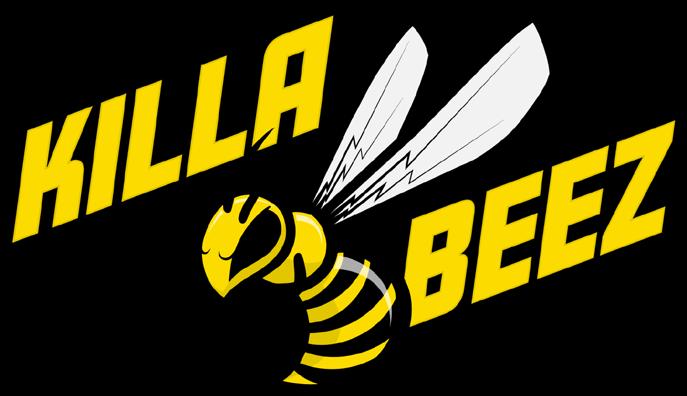









c o n s i s t e n c y, p u r i t y a n d p o t e n c y y o u c a n c o u n t o n





with depth, complexity and undeniable presence, it demands attention before you even crack the jar. Its tall, dark and handsome buds are draped in a deep palette of shadowy shades, ranging from green-black to small pops of purple. Thick trichomes glisten against the inky leaves, creating a visual contrast so striking it’s almost glassy. This offers an obsidian opulence that looks more like a gemstone than ganja.
“...a
slow descent into full-body melt and utter creaminess, like being dipped in dulce de dank…”
Cracking this jar may cause whiplash and will certainly clear a room (or fill it — depending on the crowd). Breaking a nug, and the nose hits just as heavy on both sides of the aroma ring, delivering scoops of savory intrigue that pepper the senses. It’s like a rubber-wrapped sirloin with a side of sweet pear, a contrast that somehow works, pulling you in for another whiff. The flavor follows suit — fruit-forward with a slip of smooth, meaty stank lingering on the tip of your tongue. As for the smoke? Silky. Plush. Perfectly pleasant. It lingers on the lips, leaving you wanting more, sinking in smoothly as it hugs your lungs. The effect is a slow descent into

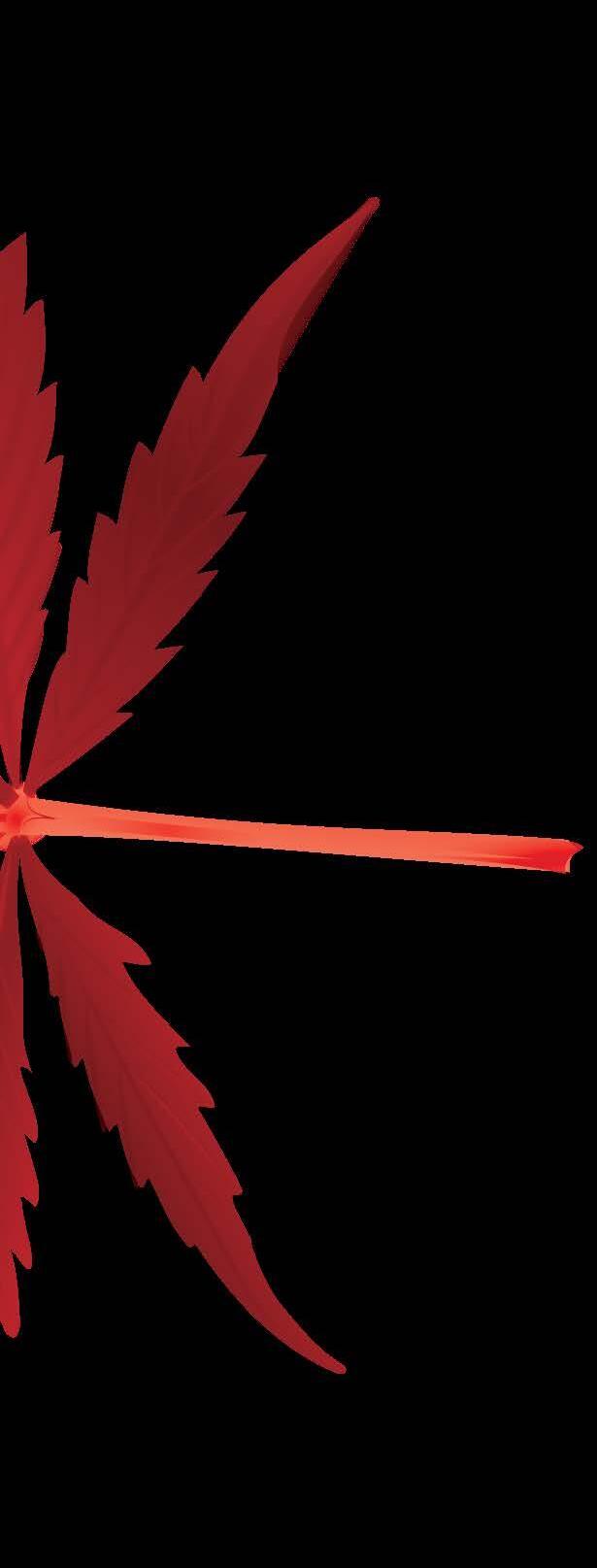


your lungs. The effect is a slow descent into full-body melt and utter creaminess, like being dipped in dulce de dank — a warm, gooey embrace.
@exoticgenetix_mike www.exoticgenetix.com
apr. 2025 @derbys_farm









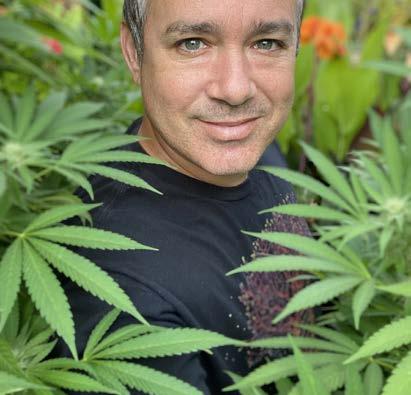


Just south of Philly, you’ll find Jeff DiMarco, a man dedicated to the craft of documenting art, focusing on bringing high-quality imagery of artists’ works.
Jeff has always pushed himself to develop his own style. His journey into professional photography began just after Y2K. He had an entrepreneurial spirit dating back to high school, where he was often selected for
Wind Home has spent his life in Eugene, Oregon, where he’s raised his children and worked as a professional photographer for most of his career. While focusing mainly on action sports and some portrait photography, he found a fork in the road in 2010 when his friend Greg, the legendary artist known as Trident Glass, convinced him to try shooting glass art. The rest is history. Wind shifted his focus to fully immerse himself in the world of glass art photography.
“We don’t do this for the money; we do it for a love of the art!”
His mantra is simple: “We don’t do this for the money; we do it for a love of the art!” As a very modest soul, he puts a lot of focus on documenting art for the masses and producing striking images. When Wind isn’t behind the lens, you can usually catch him throwing rocks at the lanes. This Dude abides!




video and film work at sporting events, plays and more, while also landing his first paid gigs.
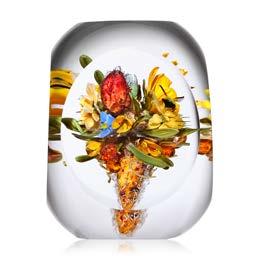

Fast forward to Philly in 2014, Jeff’s girlfriend had a friend who had just started blowing glass at Krushmore, a glass studio founded by Slinger, Certo and Germ. After being inspired by Photobytoto, Jeff began accepting offers to shoot glass art.
That accelerated quickly, and before long, he was shooting for many top artists in the industry, eventually being chosen by Slinger to be his personal photographer.
As seen in the images here, Jeff continues to innovate in the industry. Fortunately, he became another one of my mentors who never held anything back, and I’m very proud to highlight his work here!
“Jeff continues to innovate in the industry.”







Jamie Zill has been a staple in the professional glass art photography scene since 2010. While pursuing her BFA in photography at Virginia Commonwealth University in Richmond, she worked at Green House Glass, where her two worlds came together. Since functional glass art was still considered illegal at that time, she started shooting glass on the side while finishing her degree.
Once she found her stride in glass art photography, she never looked back.
It started with the Head Shop before moving on to document the amazing works of artists like AKM, Mike Gcheck and others in the Richmond area.

“... it’s not in the kit — it’s all about bending the light.”
JLZILL.COM
@JLZILL
In 2013, Jamie decided to make her home somewhere out west where Cannabis was legalized for recreational use, making her favorite subjects much easier to pursue professionally. Fortunately for the PNW, Jamie landed in Seattle.
We at Leaf Magazines are fortunate to have her talents and amazing energy in our market. Jamie is not just a wicked photographer, she’s a great friend, dog lover, outdoor enthusiast and mentor.
As shown in these epic images, Jamie Zill’s skill set allows her to capture and share with the world some of the most influential images of contemporary glass art we will ever know. But she’s modest and always quick to tell you it’s not in the kit — it’s all about bending the light. While fuming techniques rate high among her favorite subjects, she truly shines when capturing UV-reactive glass art.

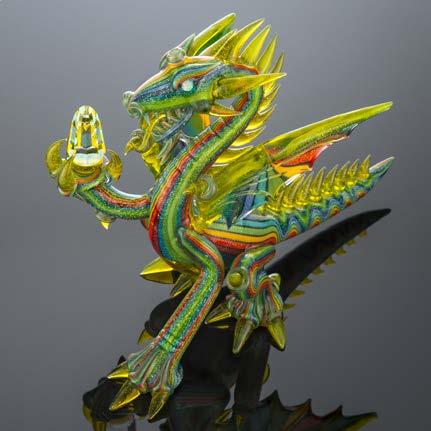

Alex Reyna, a photographer from Granada Hills, California, found his passion for glass art photography in 2008. With a background in the arts, he was captivated by the endless creativity of glass artists, constantly pushing their boundaries. “Each year, they would push their creative limits higher and higher,” Alex recalls. His fascination with the intricate details of glass pieces fueled his journey into this specialized field, capturing the beauty of transparency and light. Known for his preference for complex, detailed subjects, Alex’s favorite aesthetic to shoot was anything that challenged his eye and technique. Over the years, he used a range of tools to perfect his craft, starting with the Nikon D610 and progressing to the Nikon Z8, utilizing Paul C. Buff Einstein flash units and Fenix flashlights for lighting.

Here you will find some of his favorite images from his extensive career. Apart from being an amazing photographer, Alex has always been a great mentor; he is a very open book and encourages others to do the same. I, for one, can say his knowledge and the ability to share it with others have always inspired me to do the same.
After 15 years of shooting glass art, Alex retired in 2023, leaving behind a legacy of stunning, intricately composed images that reflect his unique perspective. From his humble beginnings in Pacoima, California, to his celebrated career, Alex’s work continues to inspire.

“Alex’s favorite aesthetic to shoot was anything that challenged his eye and technique.”
@AREYSOCAL


TURTLE TIME AND FIONA PHOENIX FIRE
are not just amazing artists; they are salt of the earth. Their art reflects the energy they bring to this planet and everyone around them. Often known for their sparkling work in dichroic colors, vivid dotwork patterns and Gaiainspired sculptures, each of them has a vision that flows like a river.

TURTLE’S JOURNEY began in Corvallis, Oregon, where he earned a bachelor’s in marine biology from Oregon State University. In fall 2000, Turtle found himself in the blossoming glass pipe scene. In 2005, Clinton Roman took him under his wing, and Turtle went full time on his journey with glass art.
In 2010, Fiona and Turtle found each other at a summer festival. Soon after their meeting, Fiona was seduced by the call of the flame. She transitioned quickly to blowing glass full time with Turtle in the new Ashland Art Glass studio in Ashland, Oregon. Turtle combines his biology background with creating highly realistic marine life sculptural pipes.
Fiona’s focus draws inspiration from the peyote stitch patterns and designs of Indigenous peoples of the Southwest. One can’t help but to stop and marvel at the art they create together.
To arrange your own custom piece, you can reach out on Instagram, or go to Ashland Art Glass on Facebook to book a class. Turtle will be performing at the Tacoma Museum of Glass the weekend of 4/20. And if you plan to attend this year’s Oregon Country Fair, don’t miss their booth!











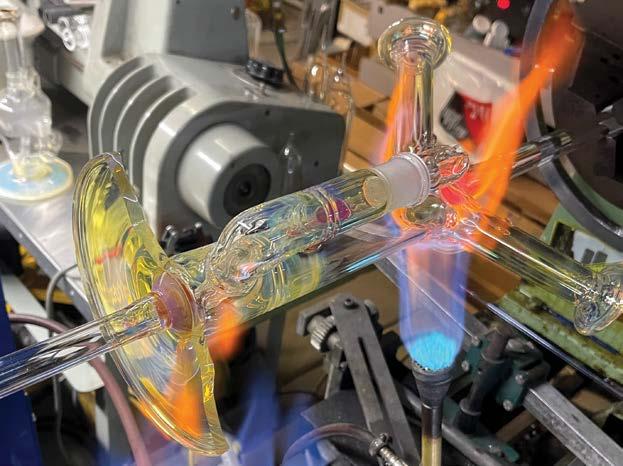
design the jewelry of the Cannabis industry. Like Cartier, Van Cleef & Arpels and Tiffany, they are the dreamers behind the shiny showstoppers at the sesh. That’s why it’s always a reason to celebrate when non-Cannabis media gives them their flowers. That’s what happened when I tuned into a recent episode of Conan O’Brien’s podcast “Conan Needs A Friend” and heard a name I instantly recognized: California glass artist Dan Dahlhauser, also known as Apix Design.

Dan says it took close to a year for him to hear back, but after that first phone call the whole process really took about a week from screening to taping.
On a pre-interview call with Team Coco’s Aaron Bleyaert, Dan went over glassblowing and the type of work he makes. It was then that Bleyaert asked if Dan could make a Conan bong — what would it look like, and could it be made so that three people could hit it at once? After an idea session on what that would look like, 30 minutes later, Dan got the call that he’d be featured on the podcast, which meant he had just a few days to create something and get it to their studios before the episode was recorded.
“It was a bit of a forced pressure to deliver,” Dan says, “but I kind of like that setup when I’m working.”
The result is what Bleyaert called the Chill Chums Bong, a 15-inch tube that splits off into three mouthpieces and flows down over a gridded stemline. The faceted bowl features three orange spiral horns to signify Conan’s signature hair, and the tube is emblazoned with Easter eggs like Conan’s signature doodle, some gerbils to reference the podcast and a big Team Coco logo. Along with the tube, Dan also created a set of glasses, ashtrays and a special Sherlock pipe for co-host Sona Movsesian. As the first glassblower ever interviewed by Conan, he felt, “Why not come in guns blazing.”
THIS BAY AREA NATIVE has been creating custom works since high school when he discovered all his friends suddenly needed bongs.
Originally he wanted to get into welding but felt it was too time-consuming and expensive, so he went into glassblowing instead. “If I only knew,” he joked.
Now living in Vacaville, CA and creating for clients all over the world, he and his wife are both die-hard fans of comedian Conan O’Brien.
So when Dan discovered that you can apply to be a guest on the latenight legend’s podcast, he immediately signed up.
Dan’s appearance on the podcast is a great conversation that shows their genuine reactions to both the piece and the art form, while also sharing how much care and intention go into making these pieces. Dan said he felt they really had fun talking about the work, how he became a glassblower and getting to share something he created as a thank-you for all the laughs O’Brien has given him and his wife. “All joking aside,” O’Brien told him, “you’re an artist.”
This Chill Chums bong is the first of its kind for Dan, but he’s already had people contact him asking for one of their own.
Fans of the podcast have also been reaching out to Dan, asking for pictures so they can see it for themselves, which are available on his website.
For now the piece rests with Team Coco, presumably in the studio waiting for the podcast’s next Chill Chums episode. When asked what Dan’s been working on next, he mentioned a desire to combine his glasswork with his love for woodworking, sculpture and furniture making. “I’ve even taken up welding.”





IF YOU’VE HAD the pleasure of meeting him in person, you know. If you haven’t, do it when you get a chance. Tony carries a certain kind of energy that is very rare these days. It’s infectious, and once it gets a hold of you, Godspeed!
Calling Colorado his home is generous; he’s constantly traveling to expand his knowledge and collaborate with his friends. Tony says his biggest inspiration is “pushing myself and my limits to see if I can get to the same level as all my friends in this amazing world.”
I constantly see him pushing himself and the limits of contemporary borosilicate art. Here you can enjoy a few of his dragon sculptures with a removable sword to use as a dabber.
If you want to find Tony Kazy, he’s doing a different opening in a different state for the rest of the year. Follow his IG for updates, and don’t miss this degen’ if he’s anywhere nearby.
@TONYKAZYGLASS






































NATHAN BELMONT’S adventure as a glass artist began in 2004 in Hawaii, where he first fell in love with the art of glassblowing. His passion for the craft has only grown over the years, and he is now based in Eugene, Oregon, where he continues to create stunning glass pieces.
Nathan is the incredible glassblowing community, a group of individuals he describes as uniquely loving and supportive. He feels an immense sense of gratitude to be a part of this tight-knit family and is continually inspired by the people around him. Nathan believes that the community deserves his very best, and he works tirelessly to contribute to it in meaningful ways.

Over the years, Nathan’s work has evolved, but his commitment to pushing the boundaries of glassblowing has remained steadfast. He has become known not only for his exceptional craftsmanship but also for his willingness to share his knowledge with others. This commitment to mentorship is evident in the upcoming events Nathan is excited to be a part of. He will be traveling to Costa Rica for a special 4/20 event, where he will bring his glasswork and teach a class, hosted by @clubsocial. This marks a unique opportunity for him to connect with fellow artists and enthusiasts in a beautiful and vibrant setting.
In addition to Costa Rica, Nathan will be teaching in Tucson, Arizona, this May and again in Colorado in July. These classes offer a chance for aspiring glass artists to learn from one of the best in the field, gaining valuable insight into the craft. Nathan’s journey is a testament to the power of community and the relentless pursuit of artistic growth, and he said he’s honored to continue sharing his knowledge and passion with others.

TEAM JAPAN is a group of unbelievably creative individuals. Including Junichi “Rose Roads” Kojima, Daisuke “Disk” Saito, Yoshinori Kondo, Takao Miyake and John Kobuki, the group has been pushing the boundaries of what can be done with glass.
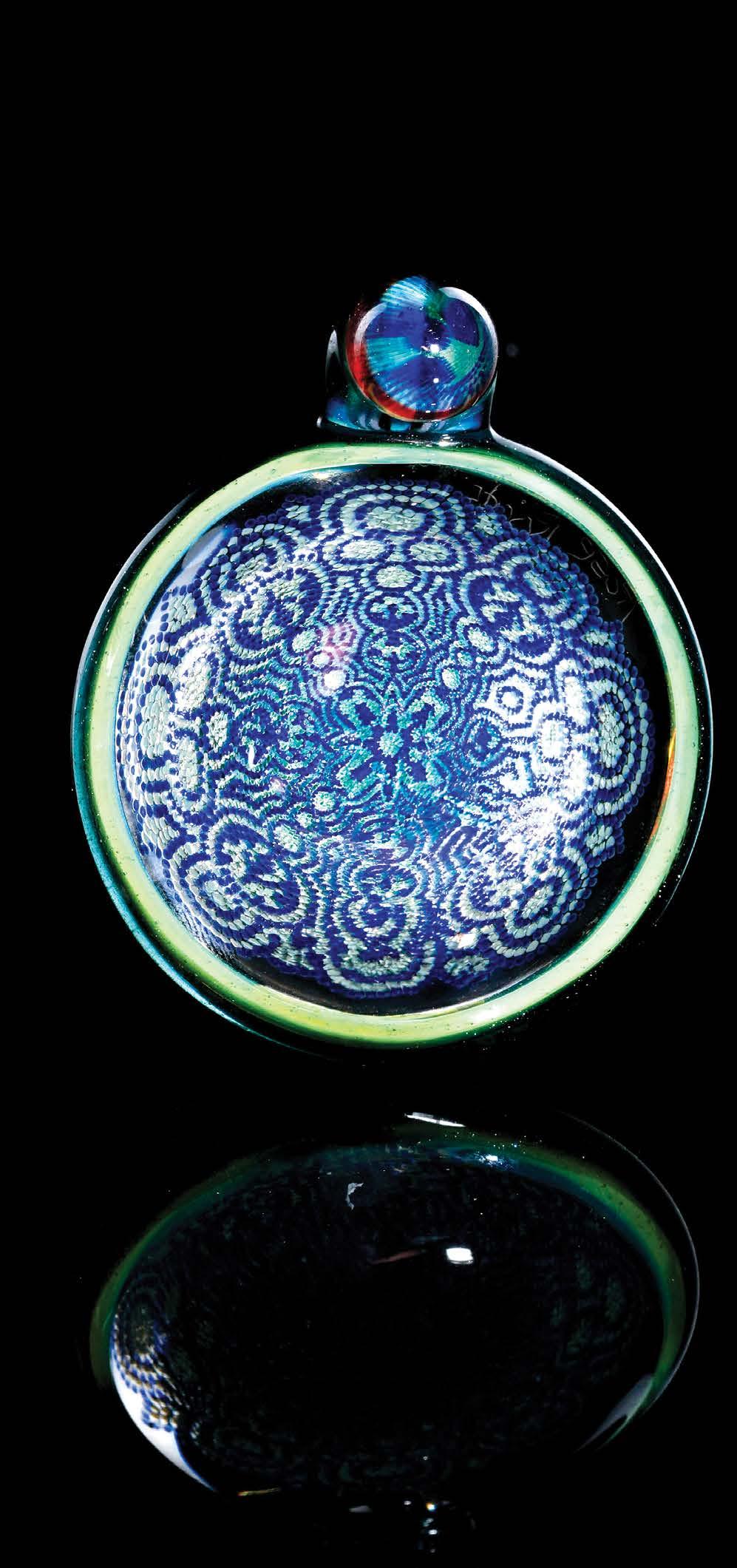
EACH MEMBER OF TEAM JAPAN brings their unique style and approach to glass art. Kojima and Miyake are known for their intricate use of pointillism in glass, a first-of-its-kind design, and both are true masters of their craft. Using thousands of dots in tight, intricate patterns, these guys create a larger image from a microcosm of colorful dots. The beautiful patterns are done with such precision that when I first saw one, I couldn’t believe it was man-made. Some are more focused on patterns, while others depict images like Grateful Dead’s Steal Your Face logo or artistic land, sea and skyscapes.
Kondo, who Leaf featured in the 2023 Glass Issue, started out making soft glass beads using his kitchen stove. He has come a long way since then, making his name a mainstay in the American glass world with some help from American artist Josh Sable. Sable saw something in Kondo and assisted him in bringing his talents to a market that was much more interested in what he was making: weed. His dot stack patterns, opal inlay work and sculpting skills made his work skyrocket in value and popularity in a short amount of time.
Saito, better known as Disk Glass, gained widespread attention for his colorfully clean mosaic patterns, which took the internet and community by storm around the same time Team Japan was gaining popularity. He regularly collaborates with different members of Team Japan as well as American artists to make the “SLOP C.U.P.,” which is a functional “Contemporary Undercover Pipe” that resembles the shape of a fast food cup. Each cup is such a collaborative process that every design is unique, and hardly any SLOP C.U.P. resembles another. Kobuki has taught, demonstrated and exhibited glass blowing both in the United States and Japan. He uses compression to create images, like Hannya masks, samurai, flowers, dragons, skulls, jellyfish, mushrooms, and way more, encased in glass. He has even used the same technique to create the Joker, Frankenstein and Krampus. He is widely known for his marbles, which are all you will find on his Instagram page and are truly a sight to behold in person.

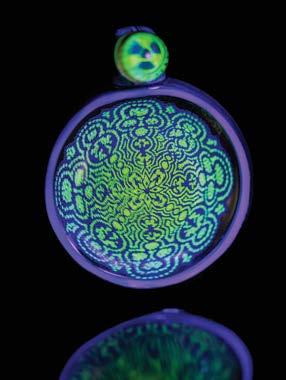
Together, Team Japan has created some of the most impressive and groundbreaking glass art in the world. Their work has been exhibited in galleries around the globe, and they have been featured in numerous publications. The value of their work has remained high, even in a fluctuating glass market. The intrinsic value of these artists’ work is something I understood immediately upon my first peak. Team Japan is an inspiration to glass artists and enthusiasts alike. Their work shows that there are no limits to what can be achieved with glass.
ROSEROADSGLASS.NET | @ROSEROADSKOJIMA | @DISK_GLASS IHE-IMPORTER.COM | @YOSHINORIKONDO @TAKAOMIYAKE | @KOBUKIGLASS

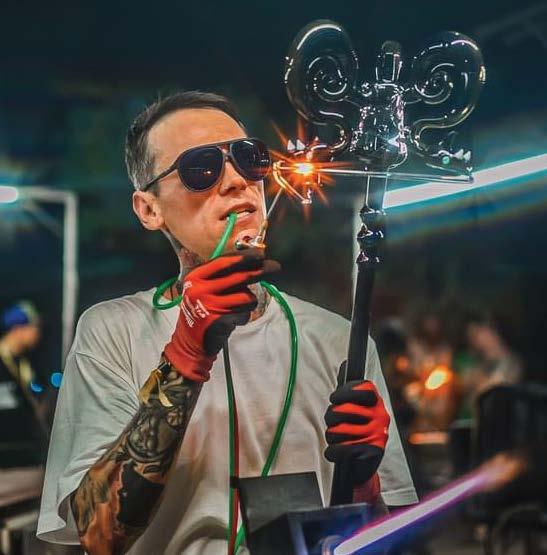
NIKO CRAY got his start on the torch in 2010 at just 18 years old. It was then that he went straight down the rabbit hole, beginning what has become an impressive career. His dedication to sculptural work and shaping absolutely shines. While maintaining a high level of technical skill in complex prep across various aesthetics, he always makes his art stand out.
COLLABORATION is a major piece of the puzzle for his work. Shown here are a few examples of masterpieces he made with Salt, Cowboy and his father, Tony Cray. These pieces highlight the fusion of their individual styles.

The functioning fountain sculpture stands nearly two feet tall, a work of art which took first place at the Midwest Meltdown!
His studio is located outside of St. Louis, where Niko and the Cray family slay the outdoors when he’s not blowing glass — building trails and ripping them on dirt bikes or getting into the backcountry for some knee-deep pow. The family that rides together stays together.
Right now he has a few larger-scale projects in the works and will be traveling to the Tacoma (Washington) Museum of Glass later this month for the Joint Venture show as a demo artist. If you have a chance, check out the museum’s annual event on April 19 and 20.

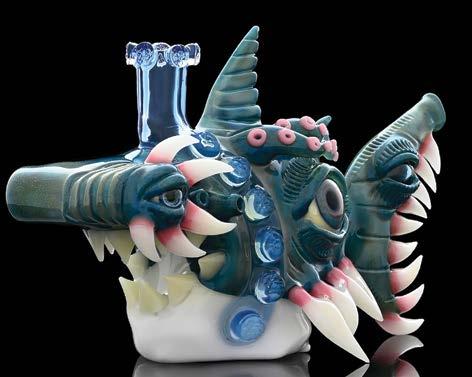

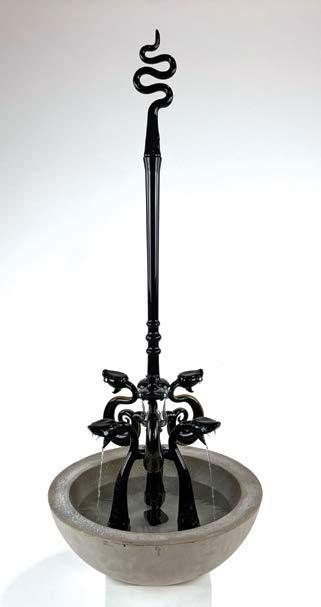

IT WAS a cool spring day, possibly May 7, 2020, when Ridiculousleeglassy, an artist renowned for his eccentricity and unwavering dedication to this craft, began working at his studio in Rickreall, Oregon, near Salem.
SURROUNDED BY the rhythmic hum of the furnace and the rich scent of molten glass, Lee Van Lindley is always deep in the process of creating something extraordinary. Whether he’s creating new prep to share with the masses of glassblowers worldwide or honing his own construction techniques, his focus is unwavering.
Ridiculousleeglassy’s journey has been one of constant inspiration and growth, deeply influenced by psychedelic art and surrealism. His mentor, Sir Pyro Glass, played a pivotal role in shaping his style, instilling a relentless drive for excellence. Equally influential is his girlfriend, Windstar Glass, whose own work fuels his passion for innovation and individuality.


With every twist and turn of the molten glass, Ridiculousleeglassy is reminded of the bigger picture. His goals aren’t simply to create; it is to master the craft, learn every technique and collaborate with others who share his vision for unique, one-of-a-kind art. Lee remains determined to one day be the best glassblower in the world. Yet beyond technical mastery, he’s always sought to grow as a person — striving to be a better human day in and day out.
As Ridiculousleeglassy looks back at his finished piece from the 2024 CHAMPS Glass Games “Down the Rabbit Hole” competition, he knows it was just one step in a larger journey. His future is full of promise, and his commitment to pushing boundaries is unwavering. For him, the art was never just about the glass — it is about constantly evolving, both as an artist and a person. @RIDICULOUSLEEGLASSY

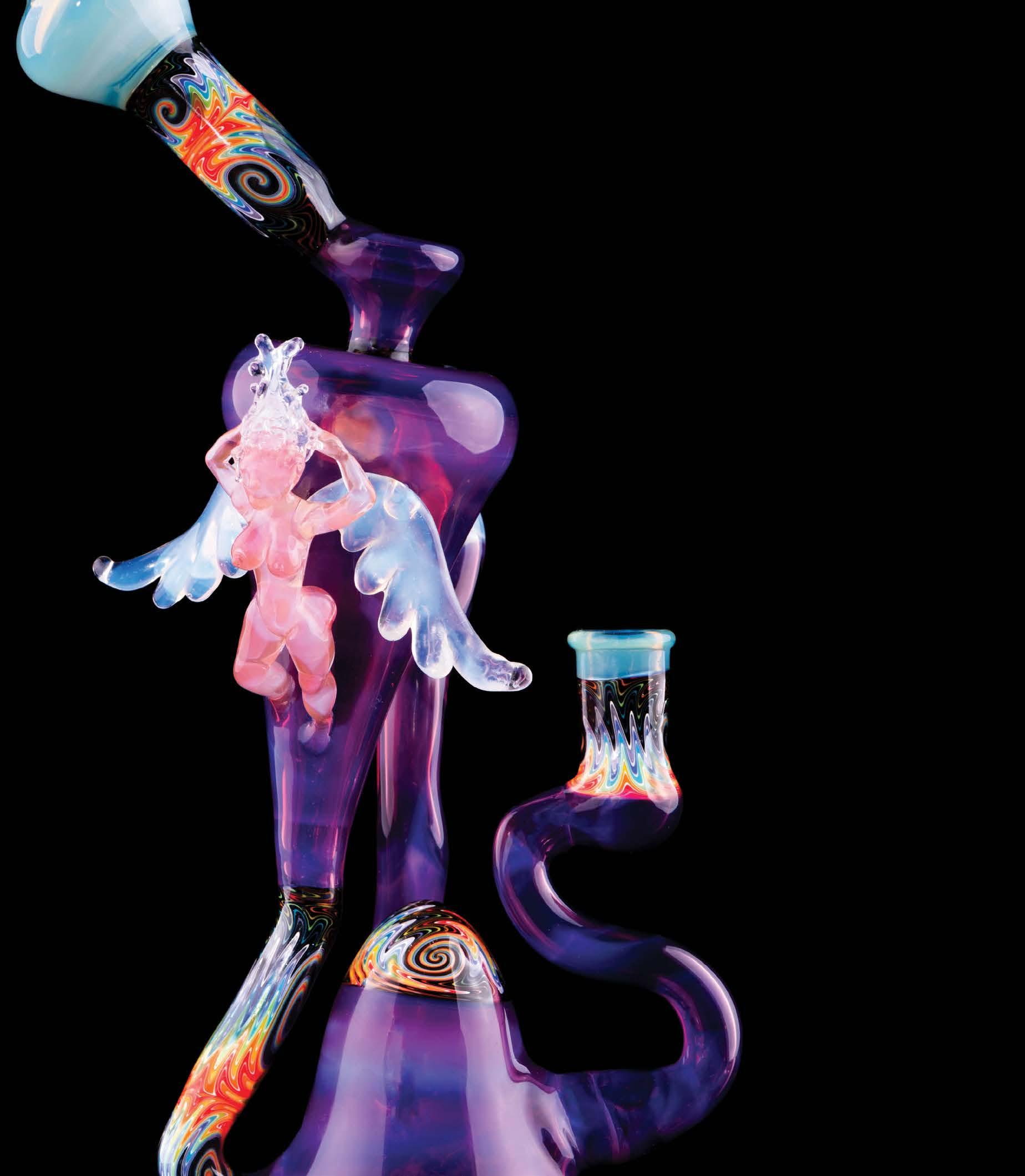





LOCATED IN the small town of Coquille on the Southern Oregon coast, Chase's studio is a place of inspiration and creativity. Surrounded by nature’s beauty — rugged coastlines, dense forests and winding rivers — he finds himself deeply influenced by the world around him. The unique landscapes, teeming with life, are reflected in his work, infusing his glass pieces with intricate designs that evoke the raw, organic shapes found in nature.

Chase’s greatest inspiration comes from nature itself, coupled with his love for sculptural art. The delicate patterns of plants, the fluid movement of animals and the harmony of the natural world all fuel his

THE TALENTED glass artist Chase Hardman has been crafting functional art for nearly two decades. His journey began in 2006 when he first picked up a torch, drawn to the dynamic relationship between heat and glass. What started as a curiosity quickly evolved into a passionate pursuit, and over the years, Chase honed his skills to become a master of his craft.
His goal is to merge these natural influences with functional glass art, creating pieces that can be both admired and used. Each work is a fusion of beauty and utility, whether it’s a glass sculpture inspired by wildlife or a piece of glassware that carries the essence of nature in its design.
Looking to the future, Chase is excited to explore new collaborations with fellow artists and expand his reach to attract a wider range of collectors. By diversifying both his designs and price range, he hopes to make his art accessible to a broader audience, continuing to share his unique vision of nature through glass.











KAJ BECK is famous for his distinct and colorful murrine (pronounced mur-eenee) work. This technique, perfected by Italian artists in the 16th century, involves stretching colored glass into long, thin rods, which are then stacked into shapes or layers and reheated into a solid piece that can be stretched again. When finally cooled and sliced, these rods are often cut to reveal the pattern or image in the cross-section.
BECK’S PIECES highlight a technique called veiled cane, where color is layered with sections of black or white. Instantly recognizable, his creations have names like “Tesseract Cells” and “Unicorn Marbles.” His murrine patterns look like bubbles blown with a straw through technicolor milk, while individual chips evoke pieces of coral from an alien planet.

When asked about this style, Beck said he simply calls it veiled cane murrine. He first learned the murrine technique from Mike Warren 20 years ago, and it instantly called to him.
Now living in Humboldt County with his wife and dog, Beck started blowing glass in a school bus in Orrick in the late ’90s. “Back then, there were about six of us cranking out secret word pipes all day,” he said. “As an artist, I’m more into pattern work than functional stuff.” But it wasn’t until after a tragic accident that he discovered the look he’s famous for today.
Around 2009, glassblowing became more of a part-time thing as he dove deep into the world of skydiving and parachuting, with the rush beginning to replace a lot of the emotional fulfillment he got from making glass art. In 2012, Beck collided with a mountain while parachuting and was stranded for four hours, waiting for search and rescue. He broke all his ribs and his back and was eventually airlifted to Stanford to reattach his foot, which had been sheared off in the crash. Throughout recovery, Beck said he really started to focus on what was important.

Beck said his work takes a massive amount of hours. “It’s kind of maniacal,” he admitted. His most recent “Tesseract Cell” (a six-sided cube) took an estimated 45 days to create the different canes, harvest a single cell from each, and fuse each side together.
After the accident, Beck returned to glassblowing, adjusting to his physical limitations. The return to the torch brought a whole new wave of creativity. Two years later, he started the type of work he’s known for today. He said his desire for direct connection has shaped how he approaches commissions and even collaborations, often at the cost of time.
Along with time, there’s also a bit of luck involved in his work. His “Unicorn Marbles” are an example of this. At the end of a cane pull, he takes the shtick section, breaks it off, and uses it to create a one-of-a-kind marble.
Recently, he’s started doing live cane pulling on Instagram and auctioning the marbles that make it off right there on the spot. Though, he says part of the fun is that not all of them make it through the process.
Speaking with Beck, it’s clear that despite his difficult accident, he’s been able to channel the energy he put into skydiving into his passion for glassblowing. “Glass gives us the opportunity to continually evolve,” he said. “It connects us to the moment, pushing ourselves to solve a problem or prove you can do something. Those are some of the purest moments of life and a lot like skydiving.”
@KAJ____BECK






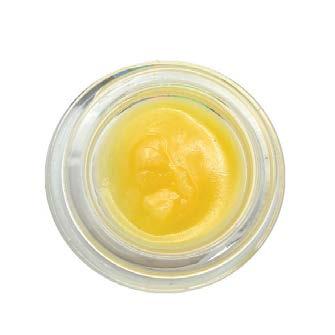

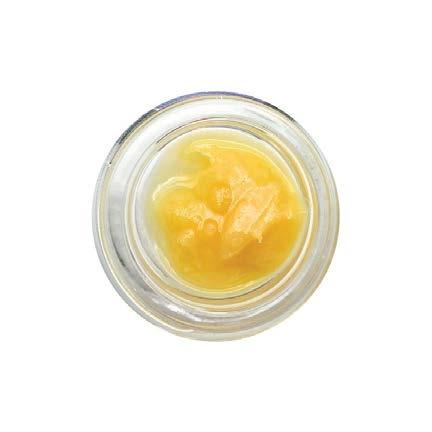







Jay and Silent Bob, The Freak Brothers, Towelie, Tommy Chong, and Jeff “The Dude” Lebowski: all classic characters from pop culture, all famous for being the absentminded and unmotivated embodiment of being a stoner. These images helped perpetuate the myth that weed will make you a lazy and befuddled person, always stuck somewhere between a weed hangover and the next sesh.
THE STEREOTYPE of the befuddled, unmotivated pothead who wakes up at noon and constantly forgets everything is a powerful image that has been used for everything from scare tactics to marketing. However, is this depiction of what weed does to your brain really indicative of long-term Cannabis use, or is it merely a myth? A couple of recent studies on the long-term effects of Cannabis use — specifically on energy levels and cognitive function — have sought to determine whether this perception of the stoner brain is a real thing or just another marijuana myth.
WILL WEED MAKE YOU LAZY?
This January, a study published in SAGE Journals examined the “emotional, motivational and self-regulatory effects of frequently getting high.” The test subjects, who each got high five times a day for a week straight, were tested periodically to register their emotional state and levels of motivation and conscientiousness. Importantly, researchers found during this testing that they found no evidence of the so-called weed hangover. Dr. Michael Inzlicht, one of the authors, told the University of Toronto, “There is a stereotype that chronic Cannabis users are somehow lazy or unproductive. We found that’s not the case. … Their behavior might change a bit in the moment while they’re high, but our evidence shows they are not lazy or lacking motivation at all.”
The paper found that, overall, people using Cannabis reported more positive emotions and fewer negative ones. Very frequent users displayed a lack of self-control and decreased organization relative to less frequent users, but Inzlicht said this attraction to distraction didn’t make them less “hard-working, responsible or able to focus.” Perhaps it's not that stoners are unable to act but that we’re acting everywhere all at once and just deciding where to land the blow. However, they did point out that this was a sample of 260 people who were willing to sit in a room high and be repeatedly asked, “How do you feel?”
A 2024 Danish study on brain behavior followed the relationship between long-term Cannabis use and IQ levels. Created as a follow-up to a report on age-related cognitive decline, the research team was able to gain access to over 5,000 male participants, divided them up between Cannabis users and non-users, and again by when they started using weed. The examination looked at extensive health questionnaires and a cognitive test given to Danish male citizens at ages 22 and 62. Using this data, along with their history of Cannabis use, scientists stated that they could find “no significant harmful effects of Cannabis use on age-related cognitive decline.” In fact, the test subjects who used Cannabis showed less decline from early adulthood through late midlife when compared to those who never tried weed.
“There is a stereotype that chronic Cannabis users are somehow lazy or unproductive. We found that’s not the case.”
The paper concludes, “Among Cannabis users, neither age of initiation … nor frequent use was significantly associated with greater age-related cognitive decline.”
Looking at their findings, potheads came out a full 1.3 IQ points lower in cognitive decline compared to sober citizens. While rich in data, this test sadly has an information blind spot, as they weren’t able to also examine non-male test subjects to better understand the facts. However, having this jumpoff point creates a greater need for additional testing. When we take a look at this data, it’s hard to still subscribe to the idea of an old stoner whose brain can’t remember where they put their pipe when it’s in their hand. It seems like these studies show tokers are keeping a pretty sharp mind, even if we are still prone to letting that mind wander.

